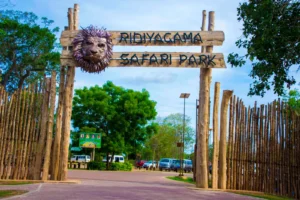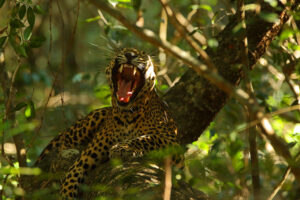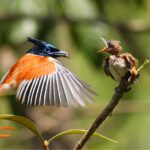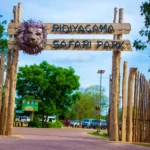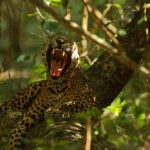Trincomalee, also known simply as Trinco is one of the major port cities of Sri Lanka and is situated in the Eastern province. It has its own naval base and harbour which adds to the importance of this city. Trinco is a popular diving spot and has many diving centres in the surrounding area.Trinco is mainly populated by Tamil nationals and therefore has a number of very popular temples in the area. Koneswaram Temple, Pathirakali Amman Temple and Shaktipeeth Shri Shankari Devi Temple are some of the temples to visit in Trinco. The Trincomalee harbour, Nilaveli Beach, Pigeon Island National Park and Maritime and Naval History Museum are just a handful of what Trinco has to offer its visitors.Not far away from Trinco are Pasikuda and Batticaloa which are two other cities popular among locals and tourists. The Pasikuda Beach is famous for scuba diving. Batticaloa also has its fair share of attractions such as the Batticaloa Lighthouse, Batticaloa Dutch Fort, Gandhi Park Batticaloa and a few Hindu temples.A trip to Sri Lanka is never complete without a visit to these beautiful cities in the Eastern province.
Pigeon Island National Park
Pigeon Island National Park is situated on Nilaveli Beach Road in Trincomalee. It is one of the two marine national parks in Sri Lanka. It is spread out on a total area of 471.429 hectares and has some of the best remaining coral reefs of Sri Lanka. Pigeon Island was designated as a sanctuary in 1963 and is the 17th national park in Sri Lanka. It consists of two islands, large pigeon island and small pigeon island. It is governed by the Department of Wildlife Conservation.
Koneswaram Temple
Koneswaram Temple is a Hindu temple situated down Konesar Road in Trincomalee. It is also known as Thirukonamalai Konesar Temple – The Temple of the Thousand Pillars, Dakshina-Then Kailasam or Thirukkoneswarama Temple. It is one of the most important and popular attractions in Trincomalee. Deity of this temple is Konanātha Swami, Māthumai and it is built on Swami Rock also known as Kōṇāmalai. Completion of the construction of the Koneswaram Temple is believed to have been during the 6th Century and later restored in 1952. The Koneswarama Temple is well known for the celebration of the traditional Ther Chariot Festival, Navaratri and Sivarathri.
Pathirakali Amman Temple
Pathirakali Amman Temple is a Hindu temple situated down New Moor Street in Trincomalee. The temple is dedicated to the goddess Bhadrakali who is a form of the goddess Kali Amman. Pathirakali Amman Temple is located close to the Swami Rock on which lies the Koneswaram Temple. It celebrates the Ther Thiruvillah Festival procession and the Back Bay Sea Festival (Theertham Karatkarai).
Maritime and Naval History Museum
The Maritime and Naval History Museum is a maritime museum situated in Lavender Lane in Trincomalee. This maritime museum was established on 3rd February 2013 and is located close to Fort Frederick where the Dutch first landed to the island back in the 16th century. The museum display’s the maritime history of Sri Lanka, marine biodiversity and information of the history of the local naval affairs.
Uppuveli Beach
Uppuveli Beach is a beach situated in Uppuveli, Trincomalee. It is among the best beaches in Trincomalee along with the Nilaveli Beach. It is famous for its calm waters and suitable conditions for diving and snorkeling. The beach has clear white sand which adds to its overall beauty.
Dutch Bay
Dutch Bay is a bay situated at the center of Trincomalee. It is a picturesque area which is ideal for swimming and other water related activities such as diving and snorkeling. Popular attractions in Trinco, such as Pigeon Island and Fort Frederick are located close to the Dutch Bay.
Orr’s Hill Army Museum
The Orr’s Hill Army Museum is a military museum situated at Plantain Point, inside 22 Army Division Headquarters in Trincomalee. This military museum has a large collection of war memorials and related exhibits including tanks which were used during the war. Visitors to the museum can go inside some of these tanks and there is also a place to try rifle shooting for an additional cost.
Nilaveli Beach
The Nilaveli Beach is situated in the coastal town of Nilaveli, which is about 16 km North of Trincomalee. It is a beautiful white sandy beach with waves ideal for surfing, diving and snorkeling. About 2 km into the sea is the famous Piegon Island and further up North is a cluster of reddish rocks known as the Red Rock Beach. Nilaveli is one of the finest and most beautiful beaches of Sri Lanka.
Seruwila Temple
Seruwila Temple is an ancient Buddhist temple situated in Seruwawila in the Trincomalee district. The Seruwila Temple is among the sixteen or seventeen holiest Buddhist shrines, named Solosmasthana, in Sri Lanka. It was built during the reign of King Kavantissa during 2nd Century BC. The temple contains the “Lalata Dathun Wahanse” which is the sacred forehead bone of Lord Buddha. Due to this reason the temple attracts many Buddhist devotees.
Kanniya Hot Water Springs
Kanniya Hot Water Springs is an archaeologically protected site with hot wells situated in Kanniya in Trincomalee. It consists of seven wells which form a square shape. The wells are just 3-4 feet deep with clearly visible bottoms. Although the water temperature of the wells are known to vary slightly from one to another, it is quite high.
It is a site popular among Sri Lankan Tamils for performing religious Hindhu rituals dedicated and in memory of lost loved ones which is believed to have started by Ravana of the epic Ramayana.
Kinniya Bridge
Kinniya Bridge is the longest bridge in Sri Lanka and is situated on the Trincomalee Highway. It is 396 meters long and 10 meters wide. The Kinniya Bridge crosses the lagoon area surrounded by Koddiyar Bay and Tambalagam Bay. The bridge links Trincomalee with Kinniya for civilians to cross the Kinniya lagoon to reach Kinniya and Muttur areas by the Trincomalee Highway. It crosses the Koddiyar bay on one side and Tambalagam bay on other side.
Hoods Tower Museum
Hoods Tower Museum is a naval museum situated in Trincomalee. This military museum belongs to the Sri Lanka Navy and is located at Ostenburg, in the Trincomalee peninsula on a high ridge overlooking the entrance to the inner harbor of Trincomalee. The naval museum gets its name “Hoods Tower Museum” because of an observation tower which is named after the Commander of the East Indies Station, Vice-Admiral Sir Samuel Hood. The museum houses a collection of weapons, equipment and various weapon systems used by the Sri Lanka Navy.
Lover’s Leap
Lover’s Leap is a cleft on a rock which is situated down Konesar Road in Trincomalee. It is located just a few meters away from the famous Koneswaram Hindu Temple. According to the Ramayana, the cleft is made by King Ravana. The mother of king Ravana had practiced the worshiping of God Shiva. When she was very ill, King Ravana lifted the shrine rock and at that time Lord Shiva made him to drop his sword. This resulted in the formation of a cleft on the rock and which also gave it the name “Ravana’s Cleft”.There is also a love story which says that a girl named Francina van Reed jumped from the top of the rock due to a broken relationship with a Dutch Officer. She was the daughter of a Holland civil service officer and had jumped off the rock when the ship carrying her former lover passed beyond the horizon.
Pulmoddai
Pulmoddai is a town situated on the northeastern coast of Sri Lanka, close to Trincomalee. Pulmoddai lies between Trincomalee and Mullaitivu. It is famous for mineral sands that are mined at its beach. The Pulmoddai deposit is about 6 kilometers in length and about 100 meters in width. It is estimated to contain 6 million tonnes of heavy sand with an average composition of 70-72 percent Ilmenite, 8-10 percent zircon, 8 percent Rutile and 0.3 percent Monazite. The deposit is believed to be among the top 10 deposits of the world.
Shaktipeeth Shri Shankari Devi Temple
Shaktipeeth Shri Shankari Devi Temple is a Hindu temple situated down Konesar Road in Trincomalee. The temple is situated adjacent to the Koneswaram Temple. It is a much less visited shrine in Trincomalee compared to the more popular Koneswaram Temple and the Pathirakali Amman Temple.
Elephant Island
Elephant Island is a small island situated in the Eastern coast of Sri Lanka, in Koddiyar Bay in Trincomalee. Its distance from the mainland is about 250 meters. It is a picturesque location to view the natural beauty of the eastern coast of Sri Lanka.
Sober Island
Sober Island is an island which is situated close to the Trincomalee harbour. At present it is host to a resort in the name of “Sober Island Resort”. Sober Island is believed to have been an important transit camp between South East Asia, Europe and Far East during the British colonial rule. The island is home to a turquoise beach, jungle and various historical artifacts. It also provides panoramic views of the Trincomalee harbour from its highest point.
Batticaloa Museum
Batticaloa Museum is situated inside the Batticaloa Fort, along Fort Road, Batticaloa. The museum was established in 1999 and has a collections of rare items such including palm-lead manuscripts, various items used during the British rule, tools and utensils.
Sri Lakshmi Narayana Perumal Kovil
Sri Lakshmi Narayana Perumal Kovil is a Hindu temple situated on 6th Mile Post, Nilaveli, Main Road, Trincomalee. It is the largest temple of Lord Vishu in Nilaveli, Trincomalee. The temple is coloured in blue and gold and consists of many carvings and sculptures related to Hinduism. The temple follows the South Indian Architecture as it was built and craftsmen brought down from India
Coconut Cultural Park
Coconut Cultural Park is situated in Pasikuda in Eastern Sri Lanka. It is an attractions dedicated for the cultivation of coconuts where visitors can wander under the coconut groves and learn the use of various parts of the coconut tree. Visitors can learn about the many products made using coconuts like rugs, ropes and coconut oil etc. The coconut ice cream is a must try during a visit to the Coconut Cultural Park.
Girihandu Seya
Girihandu Seya is an ancient Buddhist temple situated in Thiriyai, Trincomalee. It is also known as Nithupathpana Vihara and is believed to be the first Buddhist stupa in Sri Lanka. The temple is believed to have been built by two seafaring merchants named Trapusa and Bahalika whose names are recorded in a rock inscription found in the premises of the temple. The stupa in Girihandu Seya is believed to contain the hair relics of Lord Buddha and hence is named as an archaeological site in Sri Lanka.
Marble Beach
Marble Beach is a beautiful and clean beach situated in Kinniya Road, Trincomalee. This pristine sandy beach is excellent for relaxing and the sea is ideal for swimming. The famous Marble Beach Air Force Resort managed by the Sri Lanka Air Force is also located here. Marble Beach is also known by the name of Marble Bay Beach and is one of the most beautiful beaches of Sri Lanka.
Unique beauty of Marble Beach
The name “Marble Beach” is derived from the fact that when the sea is calm on a clear and bright day, the surface can be seen to be shining like marble. This calm and beautiful beach is relatively untouched and remains to be clean with pristine clear blue water. The sea here is also popular for snorkelling due to the existence of large schools of coloured fish.
Kallady Bridge
Kallady Bridge is a bridge situated in the Eastern Province of Sri Lanka which crosses the Batticaloa Lagoon at Batticaloa. Also known as the Lady Manning Bridge, this bridge is part of the Colombo – Batticaloa Highway. It is the longest and oldest iron bridge in Sri Lanka. The Kallady Bridge is owned by the Ministry of Ports & Highways and is maintained by the Road Development Authority. It is 288 meters in length and 14 meters in width and is made of iron and cement. Kallady Bridge is associated with the Batticoloa’s “singing fish” legend. Two priests from Batticoloa recorded the sound of fish singing under the bridge in the year 1954 and it was broadcasted on Radio Ceylon in the 1960s. Construction of another bridge parallel to this one was planned and was formally opened on 22 March 2013.
Kokkadicholai Thaanthonreeswarar Temple
Kokkadicholai Thaanthonreeswarar Temple is a significant Hindu temple situated in Kokkadicholai, about 15 km southwest Batticaloa District of Eastern Province, Sri Lanka. It is also one of the oldest and five most important temples in Sri Lanka. The temple is believed to have been built in the 4th century BC by Ulaga Naachi of the Chola Empire. The deity of the temple is Lord Shiva and its chariot festival is held annually in the month of September.
Pasikuda Beach
Pasikuda Beach is situated in Pasikuda in the Eastern part of Sri Lanka. It is a palm-fringed sandy beach with turquoise blue waters in a bay backed by resorts with an offshore reef. Pasikuda Beach is a beautiful location to view the amazing sunset in all its glory. The turquoise blue waters of Pasikuda attracts many tourists and it is a popular area for swimming and surfing.
Activities to do at Pasikuda Beach
Pasikuda means “green algae bay” and it is indeed such a beach with beautifully hued calm waters. This is a reason the Pasikuda beach attracts many locals and tourists. It is a great beach to surf, swim or stroll around. Some of the activities included here are kite surfing, boogie boarding and surfing and sailing across in a canoe. The shores are adorned by coconut palms and palmyrah trees which is a beautiful sight to see.
Mahatma Gandhi Park
Mahatma Gandhi Park is a park situated on Bazaar Street in Batticaloa. It is a modern park located along the Batticaloa lagoon waterfront in the heart of Batticaloa which is a popular area for locals and tourists to take a stroll. There is a golden statue of Mahatma Gandhi built to honor this great Indian leader.
Thettativu Kompuchanthi Pillaiyar Kovil
Thettativu Kompuchanthi Pillaiyar Kovil is a Hindu temple situated in Batticaloa in the Eastern part of Sri Lanka. It is a popular temple in Batticaloa and is attended by many of the Hindu devotees of the area and from far away towns. The temple is dedicated to Lord Ganesha of Hinduism. It is a large and colorful Hindu temple with a large image of Lord Ganesha in the front side.
Velgam Vehera
Velgam Vehera is a historical Buddhist temple situated n Velgam Vihara Road in Kanniya, Trincomalee. It is also known as Natanar Kovil to the Hindus and is located at the Velgam Vehera Archaeological Site protected by the Sri Lanka Archaeological Department. Hence it is worshiped by both the Sinhalese and the Tamils. The temple is believed to have been built during the reign of King Devanampiyathissa and later renovated by Kings Bathiya I, Agkbo II, Vijayabahu I and Parakramabahu
Batticaloa Lagoon
Batticaloa Lagoon is a large estuarine lagoon situated in Batticaloa District of the Eastern Province of Sri Lanka. The Batticaloa district has three lagoons namely Batticaloa lagoon, Valaichchenai Lagoon and Vakari Lagoon. The Batticaloa Lagoon is the largest lagoon in the whole of Batticaloa district and is 56 km long. The Batticaloa Llagoon extends from Eravur in the Batticaloa district to Kalmunai in the Ampara district.
Batticaloa Lighthouse
The Batticaloa Lighthouse is a lighthouse situated on Bar Road in Batticaloa. It is 28 meters high and was built in 1913. The lighouse is situated near the estuary in Palameenmadu and has a very nice area suitable for walking and cycling. It is possible to reach the top of the lighthouse to witness an amazing view of the beautiful surroundings.
Eco Park, Batticaloa
Eco Park is situated in Palanmeenmadu Island in Batticaloa. Visitors have to take go on a boat from the Batticaloa Lagoon. It provides amazing views of the inland from an island. The popular bird watching desk provides spectacular views of sea eagles (Brahminy kite) gliding down the lagoon waters to catch fish which is a highlight of the park. It’s best to visit the park during sunset or sunrise due to the stunning views. It is the perfect place to relax with family as it has a play area for children.
Kalkudah Beach
Kalkudah Beach is a naturally beautiful beach with soft sand situated in Kalkudah in the Eastern part of Sri Lanka. It is an amazing sight to see with the sea, sand and palm trees. There are a few resorts on the beach side. Local fishermen go fishing at Kalkudah.
Kokkilai Sanctuary
Kokkilai Sanctuary is a wildlife sanctuary which is situated in Kokkilai, south east of Mullativu in north eastern Sri Lanka. It was established on 18th May 1951 and is administered by the Department of Wildlife Conservation in Sri Lanka. It is located surrounding the Kokkilai lagoon which consists of mangroves and a variety of water and wader birds such as ducks, flamingos, pelicans and storks.
World War II British War Cemetery at Trincomalee
There are six Commonwealth war cemeteries in Sri Lanka, four in Colombo, one in the hill capital Kandy and one in Trincomalee. Other Commonwealth war casualties rest in Jawatte Muslim Cemetery, Kuppiyawatte Muslim Cemetery, handy Civil Cemetery, George E. De Silva Park in Kandy and Nuwara Eliya Holy Trinity Churchyard.A total of 1,999 Commonwealth war dead are commemorated in the war cemeteries or plots in Sri Lanka. There are two Commonwealth war memorials in Colombo. Liveramentu Cemetery: the first, the Liveramentu Memorial bears the names of 346 Commonwealth service men and one serviceman from the Netherlands; the other, the Cremation Memorial commemorates 165 servicemen of the Hindu faith.The Trincomalee cemetery was originally the Combined Services Cemetery, but was taken over by the Admiralty from the military authorities in April 1948 for use as a permanent naval cemetery. On the withdrawal of United Kingdom Forces from Ceylon it became the property of the Ceylon Government is today maintained by the Ministry of Defense on behalf of the Commonwealth War Graves Commission.
The cemetery records 303 world war II causalities. Save for a few post-war and non-war graves it is purely a war cemetery, and service war graves were transferred to it from Trincomalee (St. Mary) Churchyard; Trincomalee (St. Stephen’s) Cemetery, Kottadi Cemetery, Jaffna; and Vavuiyna Combined Cemetery. A special memorial commemorates a naval man buried in Trincomalee (St. Stephen’s) Cemetery whose grave could not be found.The non-war graves are those of men of the Merchant Navy whose death was not due to war service, and of civilians, of whom some were employees of the Admiralty; while the post-war graves were dependents of servicemen, civilian employees of the Admiralty and dependents of such employees.
This cemetery is located on the Trincomalee – Nilaveli Road ( B424) approx 5 km from Trincomalee ( railway station). The visiting hours are 9 AM to 4.30 PM.
Whale Watching in Sri Lanka
Sri Lanka has become the latest hotspots for the Blue whale, the largest Animal on earth and the heaviest to ever existed on earth.Blue whales were killed in thousands for their body fat in the early 1900’s which drove them almost to extinction until the protection by the international community in 1966. The blue whale population which was estimated around 300,000 before the whaling boom had come down to just 650-2000 whales by the time the ban was introduced. The population growth after the ban as been very slow and a 2002 report estimated a worldwide estimation between 5000 – 12,000 after almost 40 years of protection. The Blue whale is still classified as a Endangered Species. While the world was counting whales elsewhere a small population of whales around Sri Lanka, was growing unseen and unchecked by everybody due to the 30 years of terrorist war. After end of the war in 2009, 3 locations around Sri Lanka was found to be bubbling with Blue whales, Ocras (killer whales), Sperm Whales, Pilot Whales, Whale Sharks and large pods of Dolphins.
What is unique about the Blue whales around Sri Lanka are that some colonies remain in the same area through out the year while most whales worldwide travel thousands of kilometers each year in search of food sources. Therefore whales can be seen through out year in Sri Lanka but there are peaks months where the migrant whales joins the feast.There are 3 areas which has become world hot spots for Blue whales which is said to have 70% – 90% strike rate based on the time of the season.
Fort Fredrick at Trincomalee
Trincomalee which is a natural deep-water harbour that has attracted sea farers like Marco Polo , Ptolemy and Sea Traders from China and East Asia since ancient times. Trinco, as it is commonly called, has been a sea port since the days of the ancient Sri Lankan Kings. The earliest known reference to the port of Gokanna is found in the Mahavamsa stating that in 5th century BC, when King Vijaya who having failed to convince his brother to come to Sri Lanka as his successor, got down his youngest son Panduvasdeva, who landed at Gokanna and was subsequently enthroned at Upatissagama.


